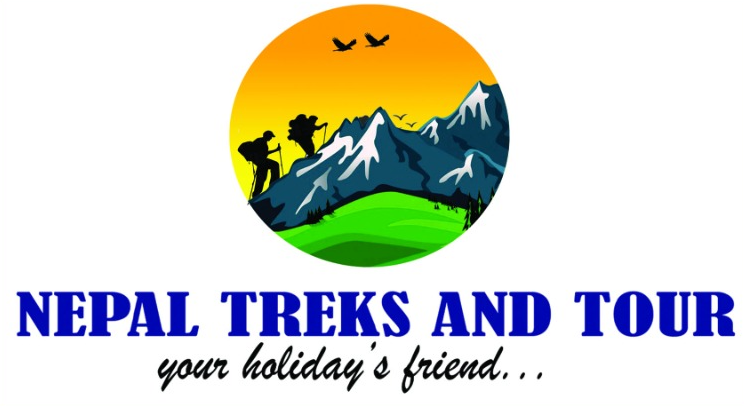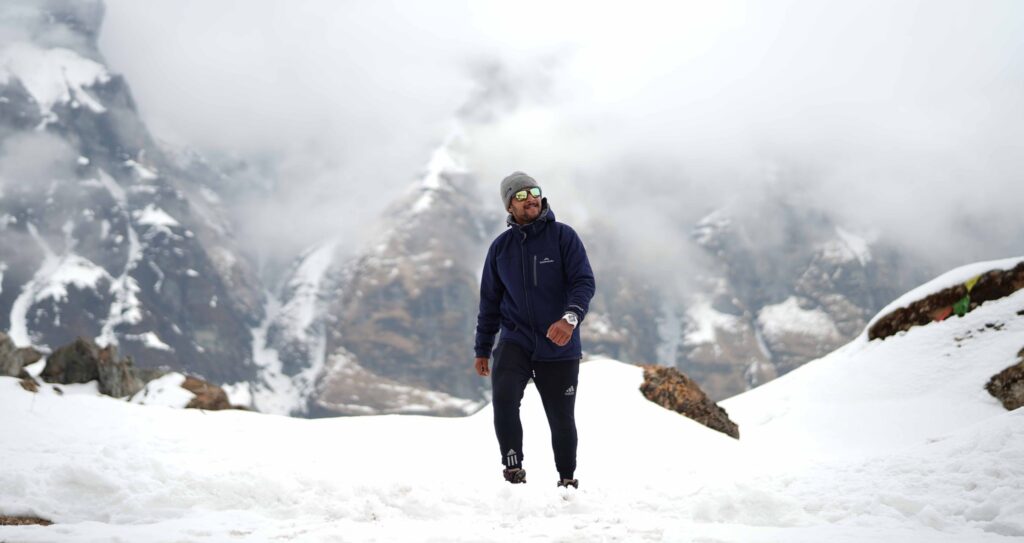Winter in Nepal (December to February) doesn’t mean trekking is off the table — in fact, it’s one of the most beautiful and peaceful times to explore the Himalayas. The air is crisp, skies are crystal clear, and the mountain views? Simply unreal. While some high passes close due to snow, there are plenty of incredible routes open and safe for winter trekkers who want beauty without the crowds. Let’s dive into the 7 best winter treks in Nepal — routes that are scenic, comfortable, and perfectly suited for the cool, clear months.
Why Trek in Nepal During Winter?
Most people think of spring or autumn for trekking, but winter has its secret advantages:
Spectacular visibility: Crystal-clear skies offer unmatched mountain panoramas.
Peaceful experience: Fewer trekkers mean quiet trails and cozy lodges.
Comfortable temperatures in lower altitudes.
Budget-friendly season: You can enjoy great discounts on hotels, flights, and guides.
Pro Tip: Stick to trails below 4,500 meters and you’ll enjoy sunny days, fewer crowds, and excellent visibility.
Top 7 Best Winter Treks in Nepal
1. Ghorepani Poon Hill Trek (3,210m)
Duration: 4–6 days
Region: Annapurna
Difficulty: Easy to Moderate
This short trek is a favorite among beginners and families. The sunrise from Poon Hill is legendary — as the first rays of light hit Annapurna and Dhaulagiri, the snow-capped peaks glow in shades of gold and pink.
Why it’s perfect for winter:
Low altitude, safe from heavy snow.
Gorgeous views and well-maintained trails.
Cozy teahouses with warm dining halls.
Insider Tip: Start your hike early for the best sunrise view and bring a thermos of tea to enjoy the moment.
2. Langtang Valley Trek (3,800m)
Duration: 7–9 days
Region: Langtang National Park
Difficulty: Moderate
The Langtang Valley Trek is known as the “Valley of Glaciers.” During winter, the air is crisp, skies are deep blue, and the snow-covered peaks look breathtaking.
Highlights in winter:
Peaceful trails and welcoming Tamang villages.
Majestic views of Langtang Lirung and Ganesh Himal.
Less commercialized and closer to Kathmandu.
Tip: Don’t miss the hike to Kyanjin Ri (4,350m) — one of Nepal’s best viewpoints, especially in the winter light.
3. Mardi Himal Trek (4,500m)
Duration: 5–7 days
Region: Annapurna
Difficulty: Moderate
The Mardi Himal Trek is a quiet trail leading through forests, ridgelines, and small teahouses to an incredible close-up view of Machhapuchhre (Fishtail Peak).
Why it’s great in winter:
Fewer trekkers and snow-dusted mountain ridges.
Bright days, cold nights, and perfect photography light.
Fully open route even in January.
Insider Tip: Carry microspikes for icy patches in early mornings.
4. Annapurna Base Camp Trek (4,130m)
Duration: 7–10 days
Region: Annapurna Sanctuary
Difficulty: Moderate
The Annapurna Base Camp Trek (ABC) is one of the most popular and rewarding treks — and yes, it’s doable even in winter!
The amphitheater of snowy peaks surrounding the base camp is nothing short of magical in the colder months.
Why it’s perfect for winter:
Crisp air and striking visibility.
Fewer crowds at tea houses.
Safe trail with no risky high passes.
Pro Tip: Mornings can be below freezing, but daytime hikes are warm under the sun. The clear skies make the winter ABC trek one of the most scenic in Nepal.
5. Gokyo Lake Trek (4,790m)
Duration: 9–12 days
Region: Everest (Khumbu)
Difficulty: Moderate to Challenging
If you dream of seeing Everest reflected in turquoise glacial lakes, the Gokyo Lake Trek is a stunning alternative to the classic EBC route.
Winter enhances its charm — frozen lakes, fewer trekkers, and unmatched peace.
Winter highlights:
Frozen Gokyo Lakes surrounded by white peaks.
Climb Gokyo Ri (5,357m) for panoramic views of Everest, Lhotse, and Cho Oyu.
Clear skies for photography.
Travel Tip: A local guide helps navigate occasional snow patches safely.
6. Manaslu Circuit Trek (5,160m)
Duration: 12–14 days
Region: Gorkha
Difficulty: Challenging
The Manaslu Circuit Trek is one of Nepal’s most scenic and authentic trekking routes — circling Mt. Manaslu (8,163m), the world’s eighth-highest mountain.
Winter adds a serene touch, but trekkers should be prepared for some snow around Larkya La Pass.
Why it’s worth it in winter:
Remote trails with less crowd.
Unspoiled Tibetan culture and villages.
Stunning snow landscapes around Sama Gaon and Samdo.
Safety Tip: Trek with an experienced guide. The high pass (5,160m) can get snowy, so flexibility with travel dates is key.
7. Annapurna Panorama Trek (3,210m)
Duration: 6–7 days
Region: Annapurna
Difficulty: Easy to Moderate
The Annapurna Panorama Trek combines short hiking days with breathtaking views — ideal for families or first-time trekkers.
You’ll pass through charming Gurung villages, rhododendron forests, and panoramic viewpoints like Ghandruk and Tadapani.
Why it’s great for winter:
Moderate altitude, safe from deep snow.
Fantastic sunrise views from Poon Hill.
Warm, friendly teahouses open all year.
Essential Tips for Winter Trekking in Nepal
✅ Dress in layers: Base layer (thermal), fleece jacket, and a down jacket for warmth.
✅ Start early: Days are shorter; aim to reach your lodge by 3 PM.
✅ Stay hydrated: Cold air dehydrates faster.
✅ Bring microspikes: For icy morning trails.
✅ Check the forecast daily: Guides can update you on trail conditions.
Local Insight: Even in winter, the lower and mid-hill treks are sunny and comfortable during the day.
Is Winter Trekking Safe in Nepal?
Yes — winter trekking is completely safe if you plan wisely. Choose trails below 4,500m and trek with a local guide who knows alternative paths if snow appears.
Avoid extreme high passes in heavy snow conditions.
Cost of Winter Treks in Nepal
The average winter trek cost ranges from USD 500–1,000 per person, depending on route and duration. Because it’s the off-season, you can often find discounts on:
Domestic flights
Lodges
Hotels
Book with Confidence: Contact Nepal Treks and Tour to plan your safe, customized winter trek with local experts.
Quick Summary Table
| Trek Name | Duration | Difficulty | Max Altitude | Winter Highlights |
|---|---|---|---|---|
| Ghorepani Poon Hill | 4–6 days | Easy | 3,210m | Best sunrise views |
| Langtang Valley | 7–9 days | Moderate | 3,800m | Glaciers & culture |
| Mardi Himal | 5–7 days | Moderate | 4,500m | Peaceful ridge trail |
| Annapurna Base Camp | 7–10 days | Moderate | 4,130m | Snowy amphitheater |
| Gokyo Lake | 9–12 days | Moderate–Hard | 4,790m | Frozen lakes, Everest views |
| Manaslu Circuit | 12–14 days | Hard | 5,160m | Remote adventure |
| Annapurna Panorama | 6–7 days | Easy–Moderate | 3,210m | Family-friendly trek |
FAQs
1. Can I trek in Nepal during December, January, or February?
Yes! Many lower-altitude treks remain open and safe in winter.
2. Is Annapurna Base Camp Trek safe in winter?
Yes, it’s one of the best winter treks — the trail is well-marked and teahouses stay open.
3. Does Gokyo Lake Trek have snow in winter?
Yes, light snow adds beauty, but the route is still accessible with proper guidance.
4. Can I do the Manaslu Circuit Trek in winter?
Yes, but you need an experienced guide and flexibility due to snow at Larkya La Pass.
5. What is the best short trek for winter?
Ghorepani Poon Hill or Annapurna Panorama Trek.
6. How cold does it get on the trail?
Days: 10–15°C; Nights: -5°C or lower above 3,000m.
7. Are teahouses open during winter?
Yes, most remain open — especially in popular areas like Annapurna and Langtang.
8. Do I need special gear for winter trekking?
Just warm layers, gloves, and waterproof trekking boots. No need for technical equipment.
9. Are guides available during winter?
Yes, and hiring one ensures safety on icy or less-traveled routes.
10. Which trek has the best mountain view in winter?
Annapurna Base Camp and Gokyo Ri both offer jaw-dropping panoramas.
11. How difficult is Mardi Himal in winter?
Moderate — expect frosty mornings, but trails are safe and scenic.
12. Is it cheaper to trek in winter?
Yes! Accommodation and flight rates are lower than peak season.
13. Can I see snow without extreme altitude?
Yes, Langtang Valley and ABC often have light snow at mid-level points.
14. Which trek is best for beginners in winter?
Ghorepani Poon Hill or Annapurna Panorama.
15. What’s the biggest advantage of trekking in winter?
Peaceful trails, clear skies, and spectacular mountain visibility.
Winter trekking in Nepal offers something truly special — peace, purity, and picture-perfect views. From the cozy villages of Annapurna to the frozen lakes of Gokyo, the Himalayas feel more personal and powerful when the crowds are gone.
Ready to plan your winter adventure? Let’s make it happen with Nepal Treks and Tour, your trusted local trekking experts. Contact us today for custom itineraries, guides, and unbeatable experiences.







